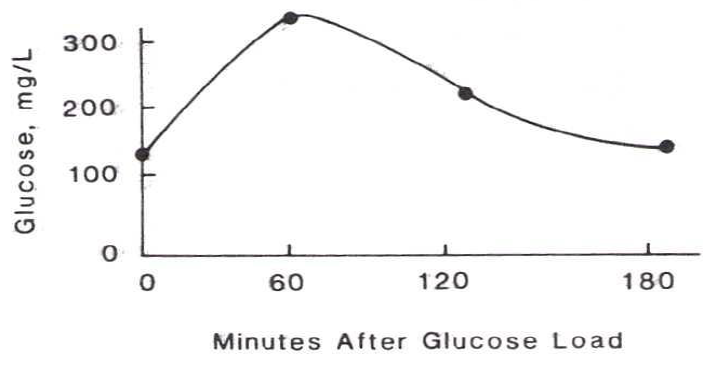1.28: Diabetes
- Page ID
- 38608
\( \newcommand{\vecs}[1]{\overset { \scriptstyle \rightharpoonup} {\mathbf{#1}} } \) \( \newcommand{\vecd}[1]{\overset{-\!-\!\rightharpoonup}{\vphantom{a}\smash {#1}}} \)\(\newcommand{\id}{\mathrm{id}}\) \( \newcommand{\Span}{\mathrm{span}}\) \( \newcommand{\kernel}{\mathrm{null}\,}\) \( \newcommand{\range}{\mathrm{range}\,}\) \( \newcommand{\RealPart}{\mathrm{Re}}\) \( \newcommand{\ImaginaryPart}{\mathrm{Im}}\) \( \newcommand{\Argument}{\mathrm{Arg}}\) \( \newcommand{\norm}[1]{\| #1 \|}\) \( \newcommand{\inner}[2]{\langle #1, #2 \rangle}\) \( \newcommand{\Span}{\mathrm{span}}\) \(\newcommand{\id}{\mathrm{id}}\) \( \newcommand{\Span}{\mathrm{span}}\) \( \newcommand{\kernel}{\mathrm{null}\,}\) \( \newcommand{\range}{\mathrm{range}\,}\) \( \newcommand{\RealPart}{\mathrm{Re}}\) \( \newcommand{\ImaginaryPart}{\mathrm{Im}}\) \( \newcommand{\Argument}{\mathrm{Arg}}\) \( \newcommand{\norm}[1]{\| #1 \|}\) \( \newcommand{\inner}[2]{\langle #1, #2 \rangle}\) \( \newcommand{\Span}{\mathrm{span}}\)\(\newcommand{\AA}{\unicode[.8,0]{x212B}}\)
- Type 1 diabetes is defined/described as:
- secondary to certain conditions and syndromes
- insulin dependent
- impaired glucose tolerance test
- glucose intolerance during pregnancy
- non-insulin dependent
- In performing a glucose tolerance test on a patient, the peak glucose level occurred after 3 hours. What is the tentative diagnosis?
- normal
- questionable diabetic
- diabetic
- impaired tolerance
- child diabetic
- In the fasting state, diabetes may be tentatively considered as the differential
diagnosis if the glucose level is greater than:- 1100 mg/L
- 1260 mg/L
- 1600 mg/L
- 2000 mg/L
- 2500 mg/L
- The liver is the major organ which can release glucose into the circulation during fasting because its cells contain:
- glucose oxidase
- glucose-6-isomerase
- glucose-6-convertase
- hexokinase
- glucose.-6-phosphatase
- The following glucose tolerance curve is representative of:
*PLEASE NOTE, THE VALUES FOR THE Y-AXIS NEED TO BE MULTIPLIED BY 10- hyperinsulinism
- hypoglycemia
- mild diabetes
- impaired glucose tolerance
- normal

- Type II diabetes is defined/described as:
- secondary to certain conditions and syndromes
- insulin dependent
- impaired glucose tolerance test
- glucose intolerance during pregnancy
- non-insulin dependent
- The glucose value of a normal 2 hour post-glucose tolerance test is:
- markedly elevated above fasting levels
- markedly below fasting levels
- within fasting normal limits
- slightly elevated above normal levels
- What is the minimum serum glucose levels at which urine would be positive for the presence of glucose?:
- 1000 mg/L
- 1400 mg/L
- 1800 mg/L
- 2200 mg/L
- 2600 mg/L
- Increased levels of insulin cause the glucose intake of cells to:
- increase
- decrease
- be blocked
- be maintained on a constant level
- remain unchanged
- The most useful analyte for monitoring long-term (6 to 8 weeks) stability of blood glucose is:
- lactic acid
- urinary ketone bodies
- insulin
- blood pH
- glycosylated hemoglobin
Column A
|
Column B
|
Use the following Key to answer Questions 12-17:
- 1,2, and 3 are correct
- 1 and 3 are correct
- 2 and 4 are correct
- only 4 is correct
- all are correct
- Which of the following are hyperlycemic agents?
- glucagen
- epinephrine
- cortisol
- thyroxine
- What is/are the most likely presentation/s of a type I diabetic in an out-of-control situation?:
- ketoacidosis
- hyperosmolar coma
- hypoinsulinemic
- non-ketotic
- What is/are the most likely presentation/s of a type II diabetic in an out-of-control situation?:
- ketoacidosis
- hyperosmolar coma
- hypoinsulinemic
- non-ketotic
- Which of the following are most useful for monitoring glucose control in a known diabetic?:
- growth hormone
- serum insulin
- urinary ketones
- urinary glucose
- The most frequent complications of chronic diabetes are:
- retinopathy
- nephropathy
- neuropathy
- microangiopathy
- Which of the following are the major complications of diabetes?:
- angiopathy
- male impotence
- nephropathy
- pheochromocytoma
- Answer
-
- b (p. 590)
- c (p. 596, 597)
- b (p. 596)
- e (p. 587)
- c (p. 590, 596)
- e (p. 590-591)
- c (p. 596-597)
- c (p. 598)
- a (p. 589)
- e (p. 598)
-
- b (p. 595)
- a (p. 589)
- a (p. 590)
- e (p. 589)
- b (p. 590, 594)
- c (p. 590-594)
- d (p. 597)
- e (p. 593-595)
- a (p. 593-595)

